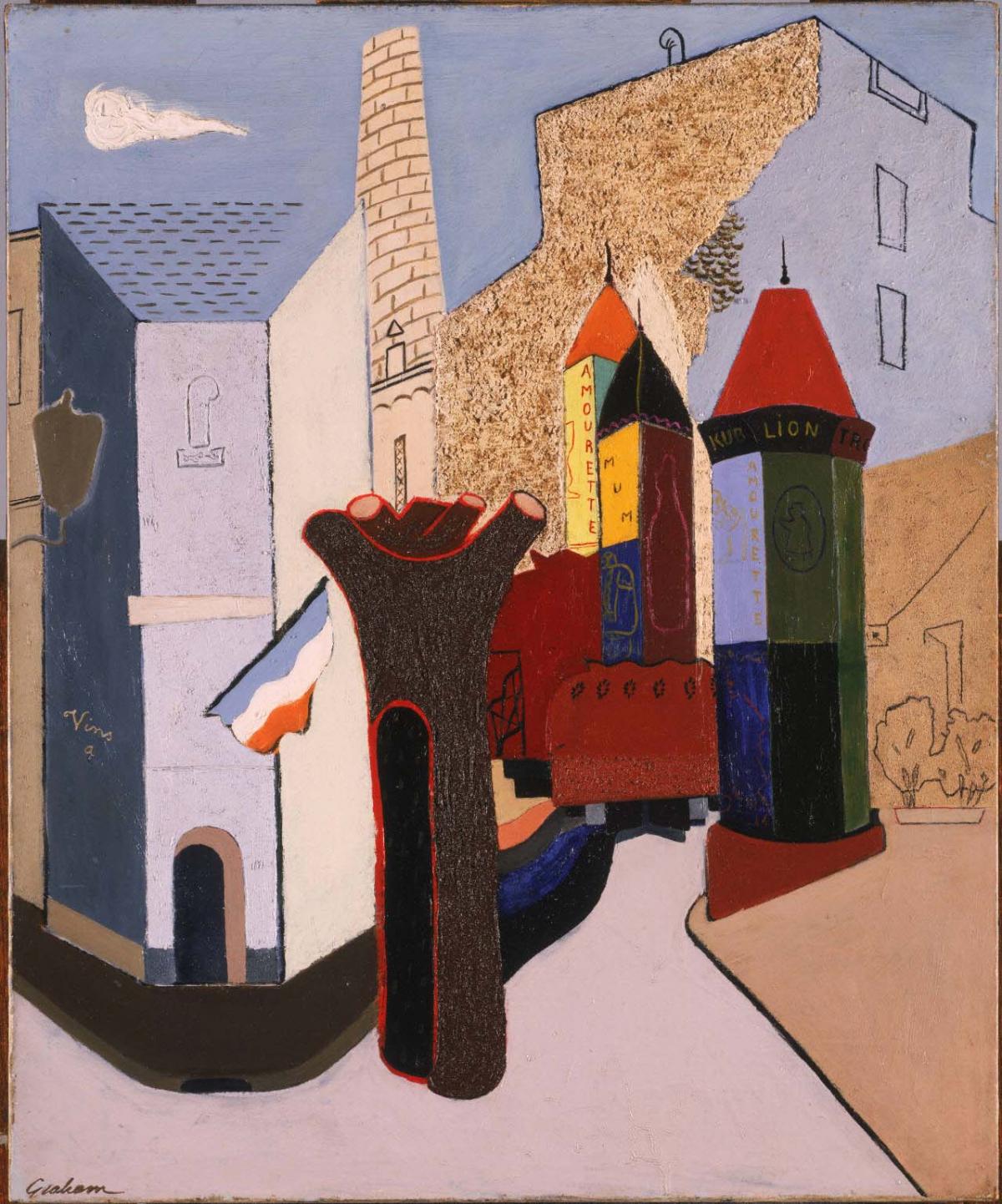Rue Brea
John D. Graham ( c. 1928 )

John Graham and Stuart Davis became lifelong friends after they met in Paris in 1928. Both men were deeply interested in art theory and likely exchanged ideas about reinterpreting cubist space in their paintings. Graham’s painting Rue Brea, executed circa 1928, reveals the influence of Davis’s Paris street scenes. He has captured the spirit of the Parisian city with his bright colors, but also demonstrates his understanding of and interest in modern art by flattening the buildings and the picture plane, which evokes the work of other French artists such as Henri Toulouse-Lautrec. In Rue Brea, Graham painted an urban landscape in a synthetic cubist style, which was once reserved only for still-life painting, emphasizing large flat areas of unmodulated color, subtle texture, and a simple geometrical structure. Graham’s empty Paris street resembles a stage set of cubical forms that describe simplified medieval buildings.